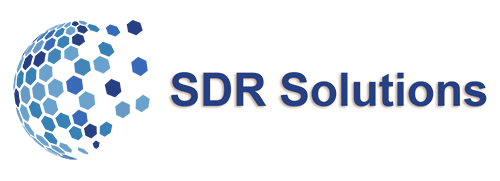Navigating Recruitment Challenges in Today’s Market
Did you know that businesses in the United States face a staggering array of recruitment challenges?
From hiring difficulties and talent acquisition hurdles to workforce obstacles and HR recruitment pain points, organizations are constantly navigating a complex landscape when it comes to building their teams.
Recruitment struggles are not limited to a single industry or company size. Whether you’re a small startup or a multinational corporation, finding and retaining top talent is a common concern.
In this article, we will explore the various challenges that organizations face in the recruitment process.
From identifying skill gaps and avoiding lengthy hiring processes to enhancing diversity in talent acquisition, we will delve into the obstacles that hinder effective recruitment in today’s highly competitive job market.
By understanding and addressing these challenges, businesses can stay ahead of the curve and secure the best candidates for their teams.
Key Takeaways:
- Businesses in the United States face a multitude of recruitment challenges.
- Hiring difficulties, talent acquisition hurdles, and HR recruitment pain points are common obstacles.
- Identifying skill gaps and enhancing diversity are crucial for successful recruitment.
- Addressing these challenges is essential for attracting top talent in today’s competitive job market.
- Understanding and adapting to the recruitment landscape is key to overcoming these obstacles.
Understanding the Contemporary Job Market Landscape
In today’s rapidly evolving job market, organizations must adapt to the shifts in employment dynamics, remote work arrangements, and the impact of unemployment rates on recruitment efforts.
This section provides an overview of the current job market landscape and explores the various factors that shape it.
Shifts in Employment Dynamics
The contemporary job market is characterized by significant changes in employment dynamics.
Traditional nine-to-five office jobs are no longer the only option for professionals.
The rise of flexible work arrangements, such as remote work and hybrid models, has transformed the way people approach their careers.
Remote work has gained significant popularity, allowing employees to work from anywhere with an internet connection.
This flexibility offers numerous benefits, including improved work-life balance, increased productivity, and access to a larger talent pool for organizations.
Hybrid work arrangements, which combine remote and in-office work, have also become commonplace.
This approach allows for a balance between the benefits of remote work and the collaborative aspects of in-person interactions, making it an attractive option for both employees and employers.
Current Unemployment Rates and Their Impact
Understanding the current unemployment rates is crucial for organizations navigating the job market.
Fluctuations in unemployment rates can have a significant impact on talent acquisition strategies and competition among employers.
“The labor market experienced a surge in unemployment rates during the COVID-19 pandemic, leading to a highly competitive hiring landscape.”
As the economy recovers, unemployment rates may decrease, indicating a tighter job market. This can make it more challenging for organizations to attract and hire top-tier talent.
Conversely, during periods of high unemployment, there may be an abundance of qualified candidates seeking employment.
However, effectively identifying and engaging with suitable candidates amidst a large applicant pool can be a time-consuming and resource-intensive process.
To succeed in this dynamic landscape, organizations must stay informed about employment trends and adapt their recruitment strategies accordingly.
Recruitment Challenges
In today’s competitive job market, organizations face numerous challenges in the recruitment process.
These challenges can hinder effective talent acquisition and have a significant impact on an organization’s ability to attract and retain top talent.
In this section, we will explore three specific challenges that organizations commonly encounter: the skill gap predicament, lengthy hiring processes, and the need to enhance diversity in talent acquisition.
Identifying the Skill Gap Predicament
One of the major challenges organizations face is the skill gap between job requirements and the available talent pool.
Rapid advancements in technology and evolving job roles have created a disparity between the skills organizations require and the skills job seekers possess.
This skill gap predicament can make it difficult for organizations to find candidates with the right qualifications and expertise.
Avoiding Lengthy Hiring Processes
Another challenge in recruitment is the lengthy and time-consuming nature of the hiring process.
Traditional recruitment processes often involve multiple rounds of interviews, extensive background checks, and lengthy decision-making processes.
These lengthy hiring processes can lead to delays in filling vacancies, which can negatively impact productivity and increase recruitment costs.
It is crucial for organizations to streamline their hiring processes and implement efficient methods to identify and select qualified candidates in a timely manner.
Enhancing Diversity in Talent Acquisition
Creating a diverse and inclusive workforce is a pressing challenge for organizations in talent acquisition.
Diversity in talent acquisition involves ensuring that the organization’s workforce is representative of various demographics, including gender, race, ethnicity, age, and more.
A diverse workforce brings different perspectives, experiences, and ideas to the table, fostering innovation and improving decision-making.
However, many organizations struggle to attract and hire diverse candidates due to unconscious biases, limited outreach efforts, and systemic barriers.
Enhancing diversity in talent acquisition requires proactive strategies, such as implementing inclusive hiring practices, diversifying recruitment channels, and fostering an inclusive company culture.
Strategies to Attract Top-tier Talent
In today’s competitive job market, attracting top-tier talent is crucial for the success of organizations.
To stand out and secure highly skilled candidates, it is necessary to implement effective recruitment strategies and talent acquisition techniques. Here are some strategies to consider:
- Develop a strong employer brand: A compelling employer brand can significantly impact the perception of your organization among top-tier talent.
Showcase your company’s culture, values, and employee benefits to attract candidates who align with your organization’s mission. - Utilize targeted job postings: Rather than relying solely on generic job boards, leverage niche platforms and industry-specific networks to reach the right audience.
This will help you connect with candidates who possess the specific skills and expertise you are seeking. - Offer competitive compensation packages: It is essential to provide competitive salary and benefits packages to attract top-tier talent.
Research industry standards and analyze competitor offerings to ensure your compensation packages are attractive and aligned with market expectations. - Implement employee referral programs: Harness the power of your existing employees by implementing referral programs.
Encourage employees to refer highly qualified candidates, and provide incentives for successful hires.
This can help you tap into networks of talented individuals who may not be actively searching for new opportunities.
By implementing these strategies, organizations can improve their chances of attracting top-tier talent and building high-performing teams.

| Strategy | Advantages | Disadvantages |
|---|---|---|
| Developing a strong employer brand |
|
|
| Utilizing targeted job postings |
|
|
| Offering competitive compensation packages |
|
|
| Implementing employee referral programs |
|
|
Technological Advancements in Recruiting
In today’s digital age, technological advancements have revolutionized the recruitment process, providing organizations with powerful tools to streamline and enhance talent acquisition.
From applicant tracking systems to artificial intelligence and data analytics, recruiters now have access to a wide range of technologies that can optimize their hiring strategies and deliver more efficient outcomes.
In this section, we will explore the impact of these technological advancements on the recruitment landscape.
Implementing Applicant Tracking Systems
Applicant tracking systems (ATS) have become an essential tool for recruiters and HR professionals.
These systems automate and streamline various aspects of the recruitment process, from job postings and candidate sourcing to resume screening, interview scheduling, and offer management.
ATS provide a centralized database for storing candidate information, allowing recruiters to easily search and track applicant progress throughout the hiring workflow.
With the help of applicant tracking systems, recruiters can efficiently manage large volumes of applications and identify top candidates more effectively.
These systems also enable collaboration among team members, ensuring seamless communication and coordination during the hiring process.
By leveraging ATS, organizations can save time, reduce administrative burdens, and improve the overall efficiency of their recruitment efforts.
Artificial Intelligence in Initial Candidate Screenings
Artificial intelligence (AI) has emerged as a game-changer in the initial candidate screening process.
AI-powered tools can analyze resumes and job applications, using natural language processing algorithms to extract relevant information and assess candidate qualifications.
By automating the screening process, AI can quickly identify the most qualified candidates based on predetermined criteria, such as skills, experience, and education.
By utilizing AI in initial candidate screenings, recruiters can significantly reduce the time and effort spent on manual resume reviews.
This allows them to focus on more strategic aspects of recruitment, such as conducting interviews and building relationships with top candidates.
Furthermore, AI-driven screening processes minimize unconscious bias, promoting fair and inclusive hiring practices.
Leveraging Data Analytics for Recruitment Decision-Making
Data analytics has become an invaluable tool for recruitment decision-making.
By analyzing recruitment data, including candidate sources, hiring metrics, and performance outcomes, organizations can gain valuable insights that inform their talent acquisition strategies.
Data analytics can help identify patterns and trends, enabling recruiters to make data-driven decisions and optimize their recruitment efforts.
Recruitment data analytics can provide valuable insights into the effectiveness of different sourcing channels, the success rate of assessments and interviews, and the overall quality of hires.
By leveraging this information, recruiters can make informed decisions about where to invest their resources, which recruitment strategies to prioritize, and how to continuously improve their hiring processes.
Data-driven recruitment empowers organizations to optimize their talent acquisition strategies for better outcomes and increased success in attracting and retaining top talent.
| Technological Advancement | Benefits |
|---|---|
| Applicant Tracking Systems (ATS) |
|
| Artificial Intelligence (AI) in Initial Candidate Screenings |
|
| Leveraging Data Analytics for Recruitment Decision-Making |
|
Employer Branding and Its Influence on Recruitment
In today’s competitive job market, employer branding plays a crucial role in attracting top talent and influencing recruitment outcomes.
A strong employer brand not only attracts highly skilled candidates but also enhances the organization’s reputation as an employer of choice.
Employer branding refers to the perception that job seekers have of a company as a place to work.
It encompasses the company’s values, mission, culture, and overall reputation.
A positive employer brand can significantly impact the recruitment process by attracting a larger pool of quality candidates who are more likely to be a good fit for the organization.
“A strong employer brand has the power to attract top talent because it creates an emotional connection between candidates and the organization.
It conveys the company’s values, culture, and opportunities for growth, making it an enticing place to work.”
One of the key aspects of employer branding is the company culture.
Job seekers today prioritize a positive work environment, diversity and inclusion, and opportunities for personal and professional growth.
They want to be part of a company that aligns with their values and offers a supportive and inclusive workplace.
Therefore, organizations must invest in building and maintaining a strong employer brand through various strategies.
This includes showcasing the company’s culture and values through effective employer branding campaigns, leveraging social media platforms to engage with potential candidates, and highlighting employee testimonials and success stories.
Furthermore, a positive employer brand can have a broader impact beyond just attracting talent.
It can also contribute to employee retention as it fosters a sense of pride and loyalty among existing employees.
When employees feel a strong connection to their organization and believe in its mission, they are more likely to stay and contribute positively to the company’s success.
The Benefits of Employer Branding:
- Attracting top-tier talent
- Enhancing the organization’s reputation
- Improving employee retention
- Increasing employee engagement and productivity
- Fostering a positive work environment
By prioritizing employer branding and cultivating a positive company culture, organizations can differentiate themselves from their competitors and position themselves as desirable employers in the job market.
This, in turn, enables them to attract and retain top talent, driving their success in a highly competitive business landscape.
| Employer Branding Strategies | Key Benefits |
|---|---|
| Showcasing company culture and values through employer branding campaigns | Attracts candidates who align with the company’s culture and values |
| Using social media platforms to engage with potential candidates | Creates a positive online presence and increases brand visibility |
| Highlighting employee testimonials and success stories | Builds trust and credibility with potential candidates |
Optimizing Candidate Experience
In order to attract and retain top talent, organizations must prioritize the candidate experience.
From initial communication to onboarding, every touchpoint with candidates should be designed to create a positive and engaging journey.
In this section, we will explore three key aspects of optimizing the candidate experience: communication protocols and transparency, facilitating a streamlined interview process, and crafting an engaging onboarding experience.
By focusing on these elements, organizations can create a seamless and memorable experience for candidates, enhancing their overall impression of the company and increasing the likelihood of successful talent acquisition.
Communication Protocols and Transparency
Effective communication is essential in providing a positive candidate experience.
Organizations should establish clear communication protocols to keep candidates informed at every stage of the recruitment process.
This includes promptly acknowledging receipt of applications, providing updates on the status of their application, and communicating the next steps in a timely manner.
Transparency is equally important in building trust with candidates. Organizations should provide information about the company, job role, and recruitment timeline, ensuring that candidates have a clear understanding of what to expect.
Transparent communication helps candidates feel valued and informed, leading to a more positive candidate experience.
Facilitating a Streamlined Interview Process
A lengthy and complicated interview process can be a major deterrent for candidates.
To optimize the candidate experience, organizations should implement a streamlined interview process that is efficient and respectful of the candidate’s time.
This can be achieved by eliminating unnecessary rounds of interviews and ensuring that each interview has a specific purpose.
Organizations should also provide clear instructions and expectations for each interview, as well as timely feedback to keep candidates engaged and informed.
Crafting an Engaging Onboarding Experience
The onboarding process sets the tone for a candidate’s journey as they transition into their new role.
Organizations should focus on crafting an engaging onboarding experience that not only familiarizes new employees with company policies and procedures but also makes them feel welcomed and supported.
This can include assigning a mentor or buddy to help new employees navigate their role, providing comprehensive training programs, and organizing team-building activities to foster connection and collaboration.
By designing an onboarding experience that is informative, interactive, and inclusive, organizations can set the stage for a positive and productive employee tenure.

| Aspect | Description |
|---|---|
| Communication Protocols and Transparency | Establish clear communication channels and provide timely updates and feedback to candidates. Promote transparency by sharing information about the company, job role, and recruitment process. |
| Streamlined Interview Process | Implement an efficient interview process by eliminating unnecessary rounds, providing clear instructions and expectations, and offering timely feedback to candidates. |
| Engaging Onboarding Experience | Create an onboarding program that is informative, interactive, and inclusive. Assign mentors or buddies, provide comprehensive training, and organize team-building activities. |
Inciting Diversity and Inclusion Through Recruitment Practices
In today’s diverse and inclusive business landscape, organizations recognize the value of a diverse workforce in driving innovation, creativity, and overall business success.
To build such a workforce, it is essential for companies to implement recruitment practices that prioritize diversity and inclusion.
By doing so, organizations can attract and retain a diverse pool of talent, foster an inclusive work environment, and reap the benefits of equal opportunity for all.
One effective strategy for inciting diversity and inclusion is through inclusive hiring practices.
This involves actively seeking out candidates from underrepresented groups and providing them with equal opportunities to showcase their skills and talents.
By eliminating biases in the recruitment process and considering diverse perspectives, organizations can create a more equitable and inclusive hiring experience.
Another important aspect of driving diversity and inclusion in recruitment is establishing a strong employer brand that reflects a commitment to these values.
Companies can achieve this by highlighting their diversity initiatives, showcasing diverse employees in marketing materials, and emphasizing their inclusive company culture.
This not only attracts diverse candidates but also sends a clear message to current employees that the organization values diversity and is committed to fostering an inclusive workplace.
Furthermore, organizations can collaborate with diverse professional organizations, attend career fairs targeted towards underrepresented groups, and expand their sourcing channels to reach a more diverse talent pool.
By actively seeking diversity across different stages of the recruitment process, companies demonstrate their commitment to inclusivity and increase the chances of hiring candidates from diverse backgrounds.
By embracing diversity and inclusion in recruitment practices, organizations can create a workplace that celebrates individual differences and fosters a sense of belonging for all employees.
This not only leads to a more engaged and satisfied workforce but also enhances creativity, innovation, and overall performance.
Moreover, organizations with diverse teams are better equipped to understand and serve diverse customer bases, giving them a competitive edge in the marketplace.
“Diversity is not about how we differ. Diversity is about embracing one another’s uniqueness.”
– Ola Joseph
Acceleration through Automation: AI in Talent Acquisition
In today’s fast-paced and competitive job market, organizations are turning to automation and artificial intelligence (AI) to streamline talent acquisition processes.
By leveraging cutting-edge technologies, such as machine learning and chatbots, companies can enhance efficiency, improve candidate experiences, and make data-driven recruitment decisions.
Transforming Resume Reviews with Machine Learning
Traditional resume reviews can be a time-consuming process, with recruiters sifting through numerous applications to identify the right candidates.
However, machine learning has revolutionized this aspect of talent acquisition. By training algorithms to analyze resumes, organizations can automate the initial screening process, saving time and effort.
Machine learning algorithms can quickly scan resumes, identifying relevant keywords, skills, and experience that match the job requirements.
This technology enables recruiters to focus their attention on a shortlist of highly qualified candidates, improving the overall efficiency of the hiring process.
Additionally, machine learning can help minimize bias in resume reviews, ensuring a fair and objective evaluation of applicants.
Chatbots and AI Interviews: The Future of Initial Assessments
Another significant development in talent acquisition is the use of chatbots and AI interviews to conduct initial assessments.
Chatbots, powered by AI, can engage with candidates and provide real-time responses to their questions, improving the candidate experience.
These virtual assistants can also gather relevant information from applicants, such as work history and skills, helping recruiters assess their suitability for the role.
AI interviews take the process a step further by using natural language processing and sentiment analysis to evaluate candidates’ responses.
These automated interviews can gauge various attributes, including communication skills, problem-solving abilities, and cultural fit.
By leveraging AI in initial assessments, organizations can efficiently evaluate a larger pool of candidates, saving time and resources.
Benefits of AI in Talent Acquisition
The integration of AI in talent acquisition offers numerous benefits for organizations:
- Efficiency: Automation reduces manual tasks, allowing recruiters to focus on strategic decision-making and building relationships with top candidates.
- Improved Candidate Experience: Chatbots and AI interviews provide instant feedback and enhance engagement, creating a positive impression of the organization.
- Data-Driven Decision-Making: AI algorithms analyze large volumes of data, providing valuable insights that can inform recruitment strategies.
- Reduced Bias: Machine learning algorithms can help mitigate unconscious bias in the screening and evaluation of candidates, promoting diversity and inclusivity.
As technology continually evolves, the role of automation and AI in talent acquisition will only continue to expand.
By embracing these advancements, organizations can gain a competitive edge in attracting and hiring top talent.
Legislation and Compliance in Recruitment
In today’s complex business environment, organizations must navigate the legal landscape of recruitment to ensure compliance with legislation and avoid potential pitfalls.
The legislation surrounding recruitment encompasses various aspects of the hiring process, including equal employment opportunity, anti-discrimination laws, and data protection regulations.
Compliance in talent acquisition involves understanding and adhering to these legal requirements.
It is crucial for organizations to implement recruitment practices that are fair, transparent, and aligned with the applicable laws.
By doing so, they can safeguard their reputation, mitigate legal risks, and attract a diverse and talented workforce.
To ensure compliance in recruitment, organizations should:
- Conduct comprehensive background checks: Adhering to legal and ethical obligations, organizations should perform thorough background checks on potential candidates, verifying their qualifications, work experience, and references.
- Promote equal employment opportunity: It is essential for organizations to provide equal opportunities for all candidates, regardless of their age, gender, race, religion, disability, or other protected characteristics. By promoting diversity and inclusion, organizations can enhance their talent pool and foster innovation and creativity.
- Maintain data privacy and protection: With the increasing reliance on technology in recruitment, organizations must prioritize the security and confidentiality of candidate data. Adhering to data protection regulations, such as the General Data Protection Regulation (GDPR), organizations should obtain informed consent, protect personal information, and securely store and process candidate data.
- Stay up to date with changing legislation: Legislation surrounding recruitment and employment practices can change over time. Organizations must stay informed about any updates or amendments to ensure ongoing compliance and avoid any legal consequences.
By prioritizing legislation and compliance in recruitment, organizations can create a fair and inclusive hiring environment while mitigating legal risks.
Additionally, compliance strengthens employer branding, as prospective candidates are more likely to be attracted to organizations with a strong commitment to legal and ethical recruitment practices.
Conclusion
Recruitment in today’s market poses numerous challenges for organizations seeking to attract and retain top talent.
Through our exploration of the contemporary job market landscape, we have identified the key obstacles that hinder effective talent acquisition, including skill gaps, lengthy hiring processes, and the need for diversity and inclusion.
To overcome these challenges, organizations must adapt and implement strategic solutions.
By leveraging recruitment strategies and talent acquisition techniques, organizations can position themselves to attract top-tier talent.
Additionally, technological advancements such as applicant tracking systems, artificial intelligence, and data analytics can streamline the recruitment process and improve decision-making.
However, it is important to remember that recruitment goes beyond just attracting talent; it also involves cultivating a strong employer brand and optimizing the candidate experience.
By prioritizing communication, transparency, and a streamlined interview process, organizations can create a positive candidate journey that sets them apart from competitors.
Furthermore, embracing diversity and inclusion in recruitment practices creates equal opportunities and fosters innovation within the workforce.
In conclusion, navigating recruitment challenges requires a multifaceted approach.
By adapting to the evolving job market landscape and implementing effective strategies, organizations can attract and retain top talent.
Key takeaways include leveraging technology, prioritizing employer branding, optimizing the candidate experience, and promoting diversity and inclusion.
By embracing these principles, organizations can overcome recruitment obstacles and build a thriving workforce.
FAQ
What are some common recruitment challenges that organizations face?
Organizations often encounter challenges such as skill gaps, lengthy hiring processes, and difficulties in enhancing diversity in talent acquisition.
How can organizations attract top-tier talent?
By implementing effective recruitment strategies and talent acquisition techniques, organizations can stand out and attract highly skilled candidates.
How are technology advancements transforming the recruitment process?
From utilizing applicant tracking systems and artificial intelligence for initial candidate screenings to leveraging data analytics for recruitment decision-making, technology is revolutionizing the way organizations source and hire talent.
Why is employer branding important in recruitment?
A strong employer brand can attract top talent and enhance the organization’s reputation. Additionally, company culture plays a vital role in employer branding.
What can organizations do to optimize the candidate experience?
By establishing clear communication protocols, ensuring transparency, streamlining the interview process, and providing engaging onboarding experiences, organizations can enhance the overall candidate journey.
How can diversity and inclusion be encouraged in recruitment practices?
Organizations can adopt inclusive hiring practices and promote diversity in their workforce to attract and retain a diverse talent pool while fostering equal opportunity.
What is the role of automation and artificial intelligence in talent acquisition?
Automation and AI technologies, such as machine learning for resume reviews and AI interviews conducted by chatbots, can streamline initial assessments and improve the efficiency of recruitment processes.
What legal considerations should organizations keep in mind during the recruitment process?
Organizations need to ensure compliance with legislation and adhere to legal requirements when conducting the hiring process.
Source Links
- https://www.infojiniconsulting.com/blog/tackling-recruitment-challenges-in-todays-job-market/
- https://hr.fsu.edu/sections/employment-recruitment-services/departments/navigating-recruitment-todays-market
- https://www.linkedin.com/pulse/navigating-recruitment-challenges-proven-strategies-success-sarna-5ptrc





